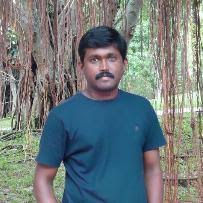Multilayered Nanofibrous Scaffold with Vancomycin & Thrombin for Acute Hemostatic Wound
- Shivendu Ranjan
- Apr 10, 2023
- 4 min read
In a multi-centric collaborative work lead by Central University situated at Lucknow (BBAU, Lucknow) along with NanoBio Research Lab IIT Kharagpur, Taylor's University-Malaysia and others have successfully engineered multilayered nanofibrous scaffold for faster healing of acute hemostatic wound.

The field of wound healing has made significant strides in recent years. Researchers have been exploring different materials and techniques to accelerate wound healing and reduce the likelihood of infection. In this regard, a new study has been published in the International Journal of Pharmaceutics, entitled "Multilayered nanofibrous scaffold of Polyvinyl alcohol/gelatin/poly (lactic-co-glycolic acid) enriched with hemostatic/antibacterial agents for rapid acute hemostatic wound healing". In this blog post, we will explore the key findings and implications of this study.

The study aimed to develop a nanofibrous scaffold for acute wound healing, incorporating hemostatic and antibacterial agents to accelerate the healing process. PVA/Gel/PLGA-based nanofibers scaffolds have been bio-mimicked by loading vancomycin and thrombin to control excessive bleeding, promote hemostatic ability and hinder bacterial growth to expedite the wound healing process.

The researchers used electrospun nanofibrous scaffold, which involves spinning a polymer solution into nanofibers using an electrical charge. The resulting scaffold was highly porous, with a high surface area to volume ratio, making it an excellent candidate for wound healing.

The study found that the nanofibrous scaffold exhibited excellent hemostatic properties, stopping bleeding in less than 2 minutes of contact with the wound. Additionally, the scaffold demonstrated potent antibacterial activity against both gram-positive and gram-negative bacteria. The researchers attribute this to the inclusion of the antibacterial agents in the scaffold.
Furthermore, the study found that the scaffold was biocompatible and supported the growth and proliferation of human dermal fibroblasts. This suggests that the scaffold is suitable for use in vivo and has the potential to accelerate wound healing.
In conclusion, the study highlights the potential of a multilayered nanofibrous scaffold for acute wound healing, enriched with hemostatic and antibacterial agents. The scaffold exhibited excellent hemostatic and antibacterial properties, as well as biocompatibility, making it a promising candidate for wound healing applications. This research paves the way for the development of advanced wound dressings that can accelerate wound healing and reduce the likelihood of infection.



Schematic illustrates the use of Vancomycin-Thrombin loaded electrospun nanofibers to accelerate the clotting and healing of wounds via a cascade mechanism.
About the Principal Investigators of different labs:
Paruvathanahalli Siddalingam Rajinikanth

Prof PS Rajinikanth is working at the Department of Pharmaceutical Science, Babasaheb Bhimrao Ambedkar University Lucknow (A Central University of Ministry of Education, Govt of India). He is also an adjunct professor of the Department of Pharmaceutical Technology, School of Pharmacy, Taylor’s University Lakeside Campus, Kuala Lumpur, Malaysia.
Shivendu Ranjan

Dr. Shivendu Ranjan is currently working as Assistant Professor at the Indian Institute of Technology Kharagpur (IIT Kharagpur) and focusing the work on Nanomedicine, Nanotoxicology, and Nano-nutraceuticals.
Dr. Ranjan is a Bioengineer passionate for Nanobiotechnology. He is a Life Fellow of many reputed scientific societies like, (i) Indian Chemical Society; (ii) The Linnean Society of London, (iii) Indian Engineering Teachers Association, and (iv) Bose Science Society. He is also an Associate Editor of Environmental Chemistry Letters (Springer journal of 13.6 Impact Factor).
After graduating from VIT Vellore, Dr. Ranjan has served many organizations like, (i) Indian Institute of Food Processing and Technology (MoFPI, Govt of India); (ii) E-Spin Nanotech, SIIC, IIT Kanpur, (iii) University of Johannesburg; and (iv) Gujarat Biotechnology Research Centre, (DST-Govt of Gujarat). Throughout his research journey he has 01 WIPO Patent, 55 scientific publications, 34 edited book and 2 authored books.
Ravi Kumar Gupta

Dr. Gupta is MSc in Biochemistry from Jamia Hamdard University, New Delhi and PhD in Medical Microbiology from Central Drug Research Institute (CDRI), Lucknow. Post PhD he worked at University of Arkansas for Medical Sciences, USA for seven years and now working as Assistant Professor at Babasaheb Bhimrao Ambedkar (Central) University, Lucknow.
Kumarappan Chidambaram

Dr. Kumar is a research track academician and senior lecturer in the School of Pharmacy, at Taylor’s University. Dr. Kumar was awarded his doctorate in pharmacology in 2008, with a specialization in endocrine pharmacology, from the Department of Pharmaceutical Technology, Jadavpur University, Kolkata, India. He obtained his undergraduate (BPharm, 1999) and postgraduates (MPharm, 2003) from Dr. MGR Medical University Chennai, India. Dr.Kumar has received a prestigious National Doctoral Fellowship (NDF) from AICTE, Government of India. Now Dr. Kumar has been directed his on animal and non-animal models of metabolic syndrome and natural products. Dr.Kumar’s research mainly focuses on the investigation of cellular and molecular mechanisms of high fructose corn syrup induced metabolic abnormalities and the development of potent molecules for the treatment of metabolic syndrome and insulin resistance.
Balamurugan Manickam

Dr. Manickam is M.Pharm from The Tamil Nadu Dr. M.G.R. Medical University, Chennai and PhD from Delhi University. Currently he is serving as Assistant Professor & Assistant Dean (UG Studies) at University of Nizwa, Oman
Research Scholars and Students, the real hero behind this work:
Giriraj Pandey, Prashant Pandey, Dilip K. Arya, Shubham Kanaujiya, Deshraj Deepak Kapoor
The full-length article was published in the International Journal of Pharmaceutics (Impact Factor: 6.51).














Comments